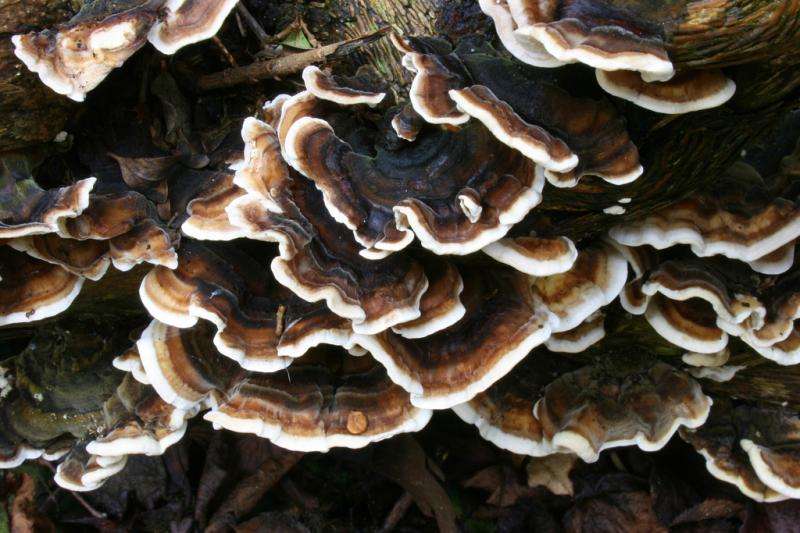Cleaning up bunker oil with white rot fungi

Researchers evaluated the potential capabilities of six white rot fungi to break down oil in contaminated canal waters.
Though white rot fungi are known for their capabilities in breaking down components of plant cell walls, their gene families suggest they have the capability to degrade oil on a wide variety of substrates. Researchers are investigating white rot fungal gene functions for a wide range of applications from bioenergy to bioremediation.
Fungi play many roles that address Department of Energy mission areas, particularly in bioenergy and environment applications. Their capabilities in breaking down wood and leaf litter are being studied by researchers at several institutions including the DOE Joint Genome Institute, a DOE Office of Science User Facility, for optimizing the production of advanced biofuels from sustainable plant sources. Fungal interactions with their ecosystems offer clues to their contributions not just to the global carbon cycle, but also to their effects on plant health (e.g., protection from or susceptibility to disease).
One area in which metabolically versatile fungi have received less attention is their ability to clean up contaminated sites. The button mushroom (Agaricus bisporus), for example, is known for its taste and its ability to decompose leaves and wood in forests, while related species have been shown to help remove in heavy metals from contaminated areas. This capability is what researchers in Massachusetts want to harness to remove the dense, viscous Bunker C fuel oil from the waters of Blackstone Canal after they were contaminated during a 1999 fire at the Fisherville Mill. In a report published June 25, 2015 in Plos One, a team including DOE JGI scientists assessed the hydrocarbon-degrading capabilities of six white rot fungi—known for their ability to break down both lignin and cellulose in plant matter—for potential use in a mycofiltration system that would cleanse the contaminated canal water.
All told, the team evaluated six white rot fungi: Irpex lacteus, Trichaptum biforme, Phlebia radiata, Trametes versicolor, Pleurotus ostreatus, (the latter three of which had been sequenced and analyzed at the DOE JGI through various Community Science Program projects). The sixth white rot, Punctularia strigosozonata, which was sequenced and analyzed at the DOE JGI to see how the oil affected its gene expression, was studied separately.
The fungal strains were inoculated onto white pine sawdust, the primary wood being considered for use in the mycofiltration unit. Researchers then added the cultures to Petri dishes along with some Bunker C oil and incubated for six months to see how well the fungi broke down the hydrocarbons.
The team found that after six months, most of the 10-carbon and 14-carbon alkane chains in the oil samples had indeed been broken down by five strains of white rot fungi. Additionally, in a 20-day test, the sixth strain, P. strigosozonata, degraded a C10 alkane in the oil sample to 99 percent. "The degradation of these compounds demonstrates the promise that white-rot fungi hold as agents of bioremediation for similar oil compounds," the team wrote. Though the processes by which the white rot fungi can break down hydrocarbons have not yet been determined, they recommend that the tests be repeated using the actual bioremediation system being developed to see how these conditions would affect the results seen in the laboratory.
These findings build upon the surprising and potentially useful capabilities that fungi possess—beyond degrading plant cell wall components to improve the production of fuels from biomass, to include degrading organic pollutants such as polycyclic aromatic hydrocarbons (PAHs), explosives, polychlorinated biphenyls (PCBs), and organochlorine pesticides.
More information: "Degradation of Bunker C Fuel Oil by White-Rot Fungi in Sawdust Cultures Suggests Potential Applications in Bioremediation." PLoS ONE 10(6): e0130381. DOI: 10.1371/journal.pone.0130381
Journal information: PLoS ONE
Provided by DOE/Joint Genome Institute





















